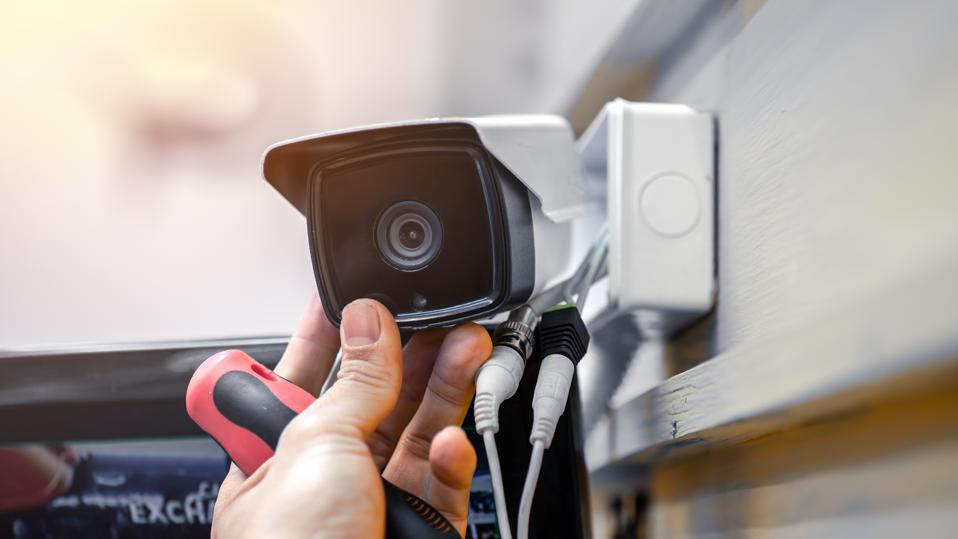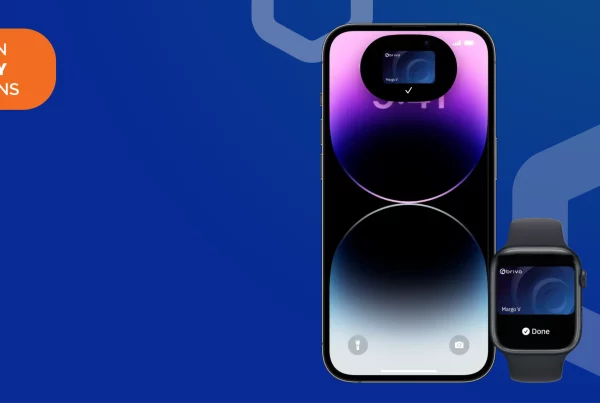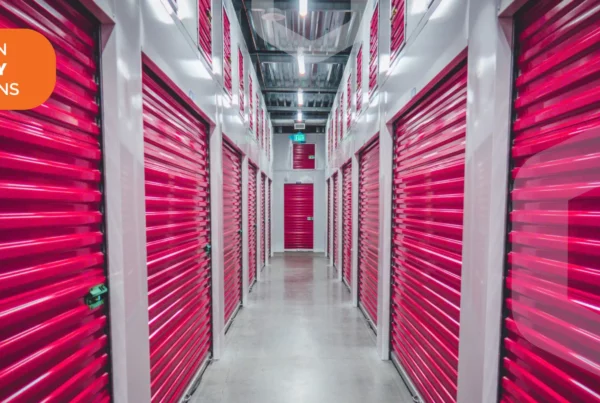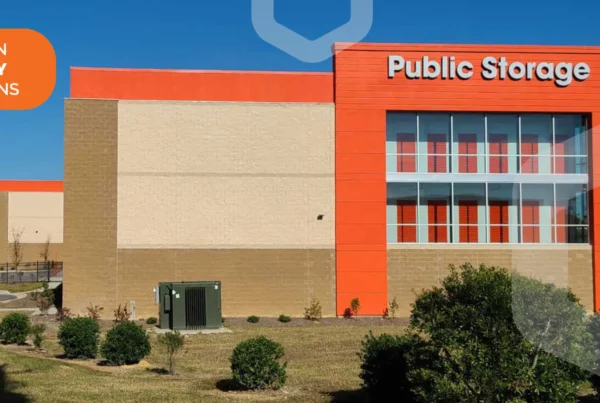Different types of Security Cameras and How to use them
Security cameras are available in a variety of forms, sizes, and functions, allowing them to be used in a variety of circumstances and locations. Movement, Size & Shape, Functions, and Housing are some of the different types of surveillance cameras.
Keep in mind that security cameras can be classified into a variety of categories and have a variety of functions.

Types of Security Cameras by Movement
Fixed Lens Security Cameras
For the most part, fixed security cameras remain in place for the duration of their deployment. Fixed cameras are used to ensure that the person in frame is always under surveillance because the only method to relocate them is to reposition or remount the device.
The term “fixed” can also apply to the lens on a variety of security cameras. A fixed lens does not allow you to change the focal length, angle of view, or zoom level. A wide-angle lens is found in nearly all fixed lens cameras. Varifocal is the polar opposite of fixed when it comes to security camera lenses.
Continuous recording of a single region with a fixed area of focus.
These low-cost, simple security cameras are perfect for most users since they can easily be mounted and pointed at a specific area with no lens or motor modifications required.
Because these security cameras can only be adjusted manually, video outside of the frame will be missed. Furthermore, the only option to expand video footage is to digitally zoom, which might result in pixelation at lower megapixel levels.
Manual Varifocal Lens Security Cameras
The final position of a manual varifocal lens may be adjusted. You may manually set the horizontal field of view of the security camera by altering the focal length, allowing you to limit the field of view to obtain more detail of any monitored region. These varifocal lenses can also be motorized, as we’ll see later.
When greater information is needed, you may manually concentrate on an area from a distance using applications. For example, when a security camera is positioned far away from an entrance, it might capture license plates and other details.
With these adjustable lenses, you may manually pick the amount of video recording detail you want, with just the camera’s megapixel number and lens limiting you.
To manually change a manual varifocal lens to your chosen focal length, you must physically remove the lens from the camera.
Motorized Varifocal Lens Security Cameras
A zoom lens is a motorized varifocal lens with several focal lengths. The focal length of these motorized lenses may be adjusted using a user interface on your video management software on your computer or smartphone. Optical zoom ratios are commonly used to describe zoom lens changes. The difference between the lowest and greatest focal lengths, or 4.3 mm to 129 mm, is referred to as 30x optical zoom.
With a motorized lens, you may alter the focal length manually or automatically based on motion at any moment. You can use a mobile or desktop program to focus on finer details of things or people in real time.
Zoom lenses offer a considerably wider adjustment range than varifocal lenses. The next best thing to a PTZ camera is a zoom or motorized varifocal lens, which is generally less costly.
Zoom lenses are more costly than manual varifocal lenses, but they will still have a restricted field of vision because the security camera itself does not move — only the lens.
Ptz (Pan-tilt-zoom) Security Cameras
PTZ (Pan-Tilt-Zoom) security cameras may change the field of view manually or with software to follow movement or persons. Top-of-the-line cameras can pan, tilt, zoom, and track particular subjects in real time.
PTZ cameras may cover a large area, however they’re usually used in tandem with fixed security cameras. Pan-Tilt-Zoom cameras are used by the majority of street cameras in big public places nowadays.
Aside from the capacity to cover 360 degrees of any location, owning a PTZ camera comes with a slew of other benefits. Anyone with access to the program may respond to or track intruders using these motorized gadgets. They may also be set up to conduct manual patterns or tours, in which they can “autopilot” the viewing of preset locations. Because of their capacity to cover wide regions, you may be able to minimize the number of cameras required in a particular area.
While coverage is one of the primary benefits, PTZs are among the most costly security cameras on the market, and they can only view and record where they’re pointed at any one moment. If you require constant 360-degree coverage, pairing a PTZ with a fixed security camera is the ideal option. Furthermore, because larger systems require additional motors, software programming, and configuration, there are many more things that may go wrong.
Types of Security Cameras by Size and Shape

Bullet Security Cameras
Bullet security cameras, also known as box or shoebox cameras, are one of the most prevalent types of cameras. They may be utilized in a number of circumstances, but they function best with overt positioning since subjects are aware that they are being watched.
These cameras are suited for both indoor and outdoor usage, depending on their IP rating and how they are housed. Security cameras are constantly fitted with bullets.
Bullet cameras are available in a range of forms, sizes, and uses. These fixed security cameras provide you more options when it comes to monitoring certain regions. Depending on the camera, many feature interchangeable lenses that may provide both closely focused and wide-angle pictures.
Due to the visible placement of the lens, these generally overt cameras are difficult to conceal the direction they are concentrating on. They can be easily misdirected or tampered with if they are within reach.
Dome Security Cameras
Dome security cameras have an inconspicuous design that allows them to be placed without the use of extra enclosure for exposed cables. The lens within the dome housing might be fixed or motorized, depending on the bullet camera inside.
These little cameras are commonly used both indoors and outdoors.
These vandal-resistant security cameras conceal the direction in which they are pointed. Their dome shells shield them from refocusing, defocusing, and impact.
Dome cameras have fewer lens options and a lower megapixel resolution than box and PTZ cameras.
Turret (Eyeball) Security Cameras
Turret (Eyeball) cameras, often known as turret security cameras, are tiny cameras with a ball and socket configuration. The word “turret” originates from the ball-shaped camera’s ability to swivel in any direction within its socket mount.
Due to their versatility, high picture quality, and small design, turret cameras are frequently recommended to customers that do not have a form factor in mind.
Turret cameras are well-known for their adaptability. After affixing your device to the wall or ceiling, you may position it in any direction, allowing you to easily get the required field of vision. Turret cameras seldom have to worry with glare generated by infrared (IR) sensors to view in low-light or dark environments since they don’t have a glass dome covering.
Unlike dome cameras, your turret camera does not have a glass casing to protect it from tampering and vandalism.
Special Functions of Security Cameras
Low-light Security Cameras
Infrared sensors are used in low-light security cameras to allow them to operate in virtually total darkness. Because of the built-in infrared illuminators, recordings may be made in low-light situations. Infrared illuminators are occasionally offered as an add-on item.
Low-light security cameras are often utilized in dark or darkened regions where extra lighting is rarely available.
Advantages – These cameras may be installed virtually anyplace and do not require a separate powered illumination source to illuminate recorded or live video footage. Although the film is black and white when the infrared sensors are turned on, black and white imagery provides far better picture contrast, making it easier to see objects, numbers, and faces.
Unlike WDR security cameras, these cameras may record pictures in almost full darkness when the infrared (IR) sensors are turned on. However, the image will appear in black and white.
Wide Dynamic Range Security Cameras
Wide Dynamic Range (WDR) security cameras use a technique that adjusts for light exposure issues. Image quality is increased using WDR technology by creating a balance between brightness and darkness. WDR security cameras can display footage in both bright and low light environments concurrently by employing dynamic contrast and dynamic capturing capabilities.
WDR technology lets you capture video of people, automobiles, and objects in front of glass doors, windows, or outside of a garage 24 hours a day, seven days a week.
Advantages – WDR security cameras are capable of collecting completely detailed images in a variety of lighting conditions, often better than the human eye. Advanced light sensors in WDR-equipped cameras are more sensitive than typical security cameras. The capacity to balance the illumination in a camera’s field of vision is attributable to either the camera’s hardware or the accompanying software, depending on the WDR camera.
Traditional fixed security cameras are more costly than WDR cameras. In order to get the necessary picture quality, WDR security cameras may need to be correctly adjusted for different lighting situations, which may require a lot of tinkering with hardware or software.
Thermal Security Cameras
Thermal security cameras are capable of capturing objects that are invisible to the naked eye. Even in low-light situations or via reflected heat, these security cameras can detect emitted or reflected heat from objects and humans.
Thermal security cameras have typically been used to record things in low-visibility situations, such as foggy or forested areas, and to detect inanimate objects or gases. However, during the COVID-19 epidemic, thermal cameras have become a popular tool for temperature monitoring. A Thermal Temperature Monitoring Solution may detect persons with high temperatures at a distance of 10 feet away with less than a 0.54-degree margin of error using specific cameras.
Added benefits – Dark, foggy, or obstructed circumstances are ideal. Temperature screening is also possible.
Instead of optical clarity, these cameras’ details are restricted to what the heat-sensors can gather. Thermal cameras are a specialized form of security camera that can be costly.
4K or 8-megapixel Security Cameras
Security cameras with 4K or 8-megapixel resolution provide more information and clarity in both live and recorded footage. 4K security cameras, with a resolution of 3840 x 2160, provide four times the visual quality of standard 1080p systems, which transmit at 1920 x 1080 resolution. Although these cameras are often employed to record wide open regions or for forensic purposes, as technology develops and 4K security cameras become more cheap, they are becoming a popular alternative for business owners..
4K security cameras are often utilized on big venues such as construction sites, sporting events, parades, and concerts, but they can be used anyplace you want to record the highest degree of detail available.
The image quality of 4K cameras is the finest on the market. Because these cameras can cover a large area, they require fewer physical installations.
If you’re presenting footage in full 4K, live video playback might use up a lot of bandwidth. However, you may choose to replay film at a lesser quality for a smoother, less bandwidth-intensive experience.
Mobile Security Cameras
Mobile security cameras are small, waterproof cameras that may be carried about. Mobile security, not to be confused with remote watching, refers to the ability to take monitoring devices with you wherever you go. These all-in-one systems, which are usually installed on a pole or high above, provide a wide variety of surveillance capabilities from a single location, requiring just a power connection to perform all activities. Temporary mobile security packages can be purchased, although they’re more commonly hired.
Mobile security cameras may be utilized in a wide range of situations, essentially anyplace temporary security is required. Furthermore, these cameras are ideal for use in remote locations where an ethernet connection is not accessible. Construction sites, utility sites, big sites, outbuildings, and even festivals, conventions, and trade exhibitions are among the most common locations.
Benefits – Mobile security cameras may be installed anywhere there is a power supply. To operate, these tough security boxes simply need 120 volts (60 Hz) of power.
Solar panels are an extremely expensive solution if power isn’t accessible. The film will have to be manually acquired from an in-box NVR if you don’t have wireless internet within range of our access point.
License Plate Recognition Security Camera
License plate recognition, often known as LPR, is a security camera function that captures crystal-clear pictures of license plates. LPR security cameras utilize a software that collects license plate numbers automatically and stores them in a database for simple searching, filtering, and retrieval.
Setting up LPR security cameras in a limited area where automobiles pass in and out at a constant rate and location is ideal.
License plate recognition security cameras are meant to save you time searching through hours of video footage for a single license plate. Furthermore, standard security cameras are often set up to record people, cars, and other big things larger than license plates. License plate cameras using infrared sensors and motion blur reduction settings can photograph license plates at any time of day and at virtually any speed.
LPR cameras must be devoted to recording license plates alone.
Housing of Security Cameras
nterior security camera housings are meant to blend in with the room’s decor. These cameras have a smaller footprint and may be used in a variety of interior settings. Indoor cameras are often easier to set up and don’t require any additional hardware such as mounting brackets.
Interior security cameras may be utilized in almost any inside area where temperature, climate, or tampering aren’t a concern.
Interior cameras are generally versatile and simple to install. Indoor camera maintenance is generally less costly and inconvenient.
Most interior cameras are less resistant to harm than their exterior or damage-resistant counterparts unless they are housed in a damage- or tamper-proof housing.
Exterior security camera housings are meant to protect the interior of your equipment from external factors such as wind, rain, and time. Exterior cameras are usually made of tough materials like PVC or rust-resistant metals. Housing or mounts to accommodate any obstructions, casing for any exposed external cabling, and/or visors or protective glass to shield against strong lighting conditions are all common exterior accessories.
Exterior security cameras may be installed anyplace outside, with the exception of locations subjected to excessive heat or weather.
Exterior cameras are more weatherproof and vandal-proof than their inside counterparts.
Because of their protective casing, outside cameras are generally heavier and bigger. Furthermore, installing outside security cameras takes more time, effort, and money than installing inside security cameras.
Security cameras that are resistant to damage are given an environmental grade to indicate how long they will last in various outdoor and indoor situations (see IP rating). While some are resistant to extreme vandalism, water, weaponry, heat, cold, weather, pressure, and a range of other natural and man-made conditions that would normally cause gadget failure, others are not.
Damage-resistant cameras have an IP rating that specifies the amount of wear and tear they can tolerate. They can be placed in settings with variable pressure, heat, cold, or other extremes, depending on the IP rating of the device. These cameras can even be used to keep an eye on equipment in places where people are unable to. Extreme settings, such as the Arctic, a meatpacking facility that is always 40 degrees below zero, or atop the mast of a Coast Guard Cutter, are examples.
Damage-resistant cameras have the capacity to continually record or broadcast footage even if the equipment is in a state of physical distress.
Damage-resistant housings are usually much bigger and thicker, as well as less visible. Depending on where they are installed and serviced, they might be difficult to install and maintain.
Trusted, Local Security Camera Installers
Are you interested in a company that offers the features and capabilities of its devices with total transparency?
Houston Security Solutions has been in business for almost a decade. Our knowledgeable security camera experts can assist you in determining which security cameras are most appropriate for your specific application and explain why. Furthermore, our professionals will install your security camera system using the most up-to-date security industry practices. We’ll guide you through every step of the process of locating material, recording and cutting video, exporting files, and everything else once your system is up and running. If any difficulties with your cameras emerge in the future, we are only a phone call or remote-view away.
Are you looking for assistance with security cameras? Houston Security Solutions will provide you with a free security assessment for your business. Our security specialists will walk you through what it takes to safeguard your business, even if you aren’t sure what you need. Houston Security Solutions can help you with all of your security needs, no matter what type of institution you need surveillance support for! Contact Houston Security Solutions now at (346) 582-2049 or fill out a quick, easy online request form if you have any concerns about how PTZ dome cameras operate, what you need for your business, or the purchase and installation procedure.
Follow our blog to stay up-to-date with houstonsecuritysolutions.com and follow us on social media.
Join the discussion by commenting below.
Use Houston Security Solutions to Assist You
Setting up remote viewing is important for safeguarding your home, but it is not the only consideration. Obviously, you’ll need a security camera system first, and you may also require an access control system or a burglar alarm. Professionals develop and install the greatest security systems, both commercial and domestic. Give Houston Security Solutions a call if you’re interested in purchasing a security camera suite or simply want more information about surveillance systems. We’d be delighted to share the knowledge that has made us Texas’s best local security system installation for almost a decade.






